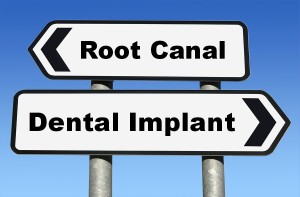
Cancer patients should have immunological and toxic
disturbances carefully removed from the oral cavity
in order to ease the burden on the self healing forces.
The treatment of a cancer patient must occur according to strict environmental-dental criteria. The goal of every dental therapy is to raise the self-regulation of the body and to ease the burden on the immune system as well as possible. In addition an expertise is necessary which unfortunately is only partially taught within the framework of knowledge transfer in the dental university.
A cancer illness is a severe chronic disease with multiple causes. As a rule it is a result of various disturbances from different subsections of medicine. Depending on the individual constitution someday the point is reached at which the resistance strength of the organism can no longer compensate for this variety of disturbances in their interactions among each other. The self-control (self regularization), the prerequisite of our health is overtaxed – the individual “barrel of disturbances” overflows. Whether and/or when this point is reached depends on various factors, i.e. on:
- The sum of individual disturbances
- The interaction of disturbances among each other
- And from very individual factors like the size of the barrel with their genetic and immunological circumstances (Fig. 1)
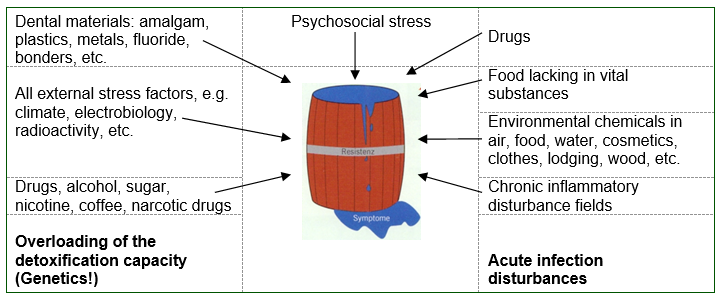 Figure 1: The unit is not crucial, the size of the barrel and the sum of the individual disturbances is crucial.
Figure 1: The unit is not crucial, the size of the barrel and the sum of the individual disturbances is crucial.
Therefore the treatment goal for every chronically ill patient must be to empty this “barrel of disturbances” as well as possible, so that the self healing forces can actively work again. For this reason for treatment of cancer patients, a dentist competent in this issue should also always contribute his part to that.
Disturbances in the Teeth
In dentistry we distinguish immunologically relevant disturbances, as chronic inflammation (continuous) disturbances with the main aspect of the non-healable inflammation, and as chronic-toxic disturbances which are predominantly described as problems of dental materials (Fig. 2). In the holistic dental practice two highly explosive problem fields with their interaction among each other are indicated extremely often: Amalgam as well as nerve-dead teeth.
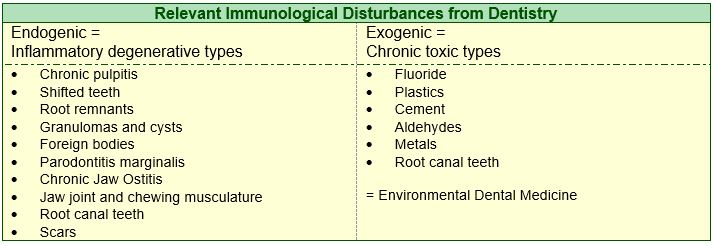 Figure 2: Relevant immunological disturbances from dentistry
Figure 2: Relevant immunological disturbances from dentistry
Amalgam is a chronic-toxic filling material (also “old” fillings) which delivers a daily mini-dose of mercury. This mercury is only partially detoxified by the organism and again excreted. However the predominant part remains in the organism, gathers in the connective tissue, in the organ cells, in the nerves and in the brain with a variety of progressive functional disturbances and pathologies. Due to the very strong connection of mercury to organic structures, solely a removal of amalgam from the teeth is absolutely not sufficient enough to accomplish amalgam reduction. An amalgam detoxification after removal of the fillings is always advisable. Therefore over and over again amalgam disturbances are a reality even for patients who often already have no more amalgam in the mouth for many years (Fig. 3).
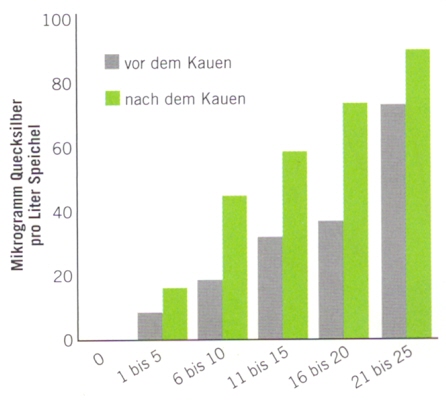
Figure 3: The mercury disturbance increases with the number of amalgam fillings. [Microgram
of mercury per liter saliva, Grey = Before mastication, Green = After mastication]
Nerve dead teeth form a permanent multiple disturbance for the immune system (Fig. 4) by:
- The remaining “cadaveric poisons” in the canal system of the devitalized teeth
- The chemical additives of the root filling materials
- The permanent infection by bacteria in the canal system of the dead teeth
- The thereby resulting non-healable inflammation around the nerve dead tooth
- The energetic interaction in the system of the meridians
 Figure 4: Disturbance of the organism by nerve dead teeth
Figure 4: Disturbance of the organism by nerve dead teeth
Since especially the immune system of the chronically ill patient must be relieved, the nerve dead teeth of the severely chronic patients are an absolute contraindication and form a therapy obstacle of the first class.
For patients with amalgam disturbances the aggravating situation comes into effect that mercaptan (cadaveric poisons) from the branch canals of the dead teeth has a high connection ability with mercury and thus can very easily form the highly toxic dimethylmercury, a material by which approximately 200 enzymes can be inactivated in the metabolism of the organism (Fig. 5).
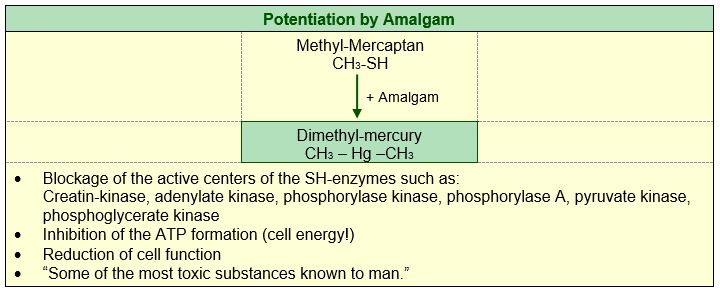 Figure 5: Potentiation effect from amalgam on mercaptan
Figure 5: Potentiation effect from amalgam on mercaptan
Therefore the very first treatment step for cancer patients should be a careful amalgam removal (according to the criteria of the German Society for the Environment and Human Toxicology). For patients who previously had amalgams in their mouth, an amalgam provocation test is recommended depending on the situation at the time, to detect the level of a possible “residual disturbance” in the organism.
Since experience has shown a large number of cancer patients have nerve dead teeth in the mouth, it is also a matter of carefully removing them, regardless whether on the X-ray image an inflammation is recognized or not. Unfortunately, a so called “root tip resection” (apicectomy, i.e. a shortening of the tooth root with a surgical removal of an inflammation) does not resolve the problem, because the cause of the multiple disturbances, namely the tooth itself, is not eliminated.
However already here begins the next treatment problem: the necessary set of dentures!
Ceramics versus Metal
Usually almost all kinds of dentures have a metallic component – many are even manufactured predominantly from metals. Since there is no metal which is absolutely corrosion free (not decomposed) in the mouth, the next source of immunological disturbances for a cancer patient is constituted here. Metals can cause allergic reactions, irritations of the biological regulation and chronic toxic disturbances of heavy and light metallic ions with an inhibition of the self healing strength and an enormous palette of possible symptoms.
As a result toxic effects develop through:
- Functional restrictions of detoxifying organs like e.g. kidney, liver, etc.
- Functional restrictions of hormonal systems like e.g. pituitary, adrenal gland, thyroid gland, pancreas, prostate, etc.
- Functional restrictions in the central and peripheral nervous system
- Functional restrictions of enzymes and the metabolism
In very strong measure the metal problem also applies for the treatment of implants. As a rule implants consist of titanium, a base metal that corrodes in the jawbone. It is well known in school medicine that the osseous parts around the existing implant are strongly burdened with titanium and also the regional lymph nodes, the first filtration station of the organism is full of titanium. However, because no allergy to titanium is known and an incompatibility is synchronized with an allergy by school medicine, everyone (according to orthodox medicine) tolerates titanium. As a rule a possible toxic disturbance from titanium is therefore not school-medically of further interest.
Disturbances of the Jawbone
For seriously chronically ill patients chronic jaw ostitis, also called NICO*, should as well be emphasized on the list of immunological irritations from dentistry. In this case it concerns a local inflammation in the jawbone without the usually typical inflammation signs like pain, X-ray or increased temperature. Because the inflammation area is difficult to recognize with the conventional dental X-ray procedure, the diagnosis is not very easy. However the jawbone inflammation is a disturbance field of the first order with massive influence on the regularization behavior of the organism and on the immune system.
A chronic jaw inflammation, although it usually appears very “hidden”, can often exhibit an unexpected size (Fig. 6) and as a rule can only be removed surgically, which is not completely unproblematic with the defense situation of cancer patients. However if the condition of the patient permits, the obligatory elimination of a NICO should occur with reinforcement of the regularization capacity and the immune system before and after therapy, in order to buffer the treatment stress to the organism.
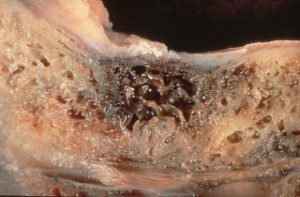 Figure 6: Clinical image of a NICO
Figure 6: Clinical image of a NICO
Photo courtesy of Gary M. Verigin, DDS
Disturbances in the Gums
Moreover, in this connection the role of marginal periodontitis, called “periodontosis” in the vernacular, a chronic (continuous) inflammation of the gums, must also be mentioned. Science already agrees for a long time in the fact that “marginal periodontitis” is not to be considered as an isolated illness, but rather indicates only one symptom within a symptom complex, which is again accompanied by certain health risks, like:
- Increased general infection readiness
- Clearly increased risk of a thrombosis formation
- Increased danger exists for coronary arteries up to cardiac infarction
- Pregnancy complications with increased risk of an untimely labor, premature birth or miscarriage
- Interaction and reinforcement effects with environmental poisons and recreational drugs, heavy and light metals as well as hormonal disturbances.
Therefore “periodontosis” is simply one symptom for a comprehensive immunological health problem, which requires therapy not only for chronic patients.
Basic Therapeutic Considerations for the Cancer Patient
For caries preservation therapy [dental] stone cement is the least burdening material. Unfortunately the durability of these materials leaves much to be desired, so that in exceptional cases plastics, in spite of their immunological side effects, can absolutely also find application. Meanwhile there are plastics on the market which dispense with some of the toxic ingredients without deteriorating the durability. However, an immediate, better and more careful preservation treatment for bigger tooth restorations would be with fully ceramic partial crowns.
For prosthetics (dentures) metal free treatment is preferential. This applies for all kinds of dentures including a possible treatment with implants. For metal free implants the fully ceramic is preferred to those from PEEK plastics.
With seriously ill cancer patients, a larger surgical intervention in the form of row extractions or surgical jaw interventions should be carried out as carefully as possible for protection of the immune system.
Therefore it would be much more sensible for everybody in the sense of genuine prophylaxis, to minimize the multifactorial influences which favor cancer events as well as possible so that it cannot only come to a chronic illness. However in our today’s modern life this is just not quite so easy and requires a critical knowledge.
For patients who would like relevant critical knowledge, various environmental medical associations stand by with support (e.g. DGUHT – proactive for people and the environment Europaem, etc.).
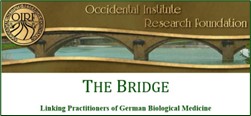 An Exclusive Translated Article for OIRF Supporters
An Exclusive Translated Article for OIRF Supporters
From THE BRIDGE Newsletter of OIRF
Published June 2017
From an article in Naturheilkunde Journal, Volume 19, May 2017
Machine Translation by SYSTRAN, Lernout & Hauspie, LogoMedia & Promt
Translation & redaction by: Carolyn L. Winsor, OIRF
© Copyright 2016, Drs. Johanna & Karlheinz Graf, Straubing, Germany
Footnote:
* Neuralgia Inducing Cavitational Osteonecrosis = NICO
Photo Courtesy Gary M. Verigin, DDS, CA USA




